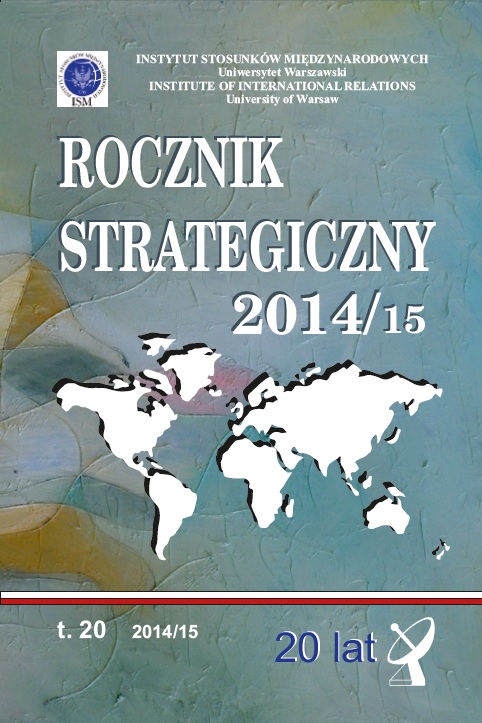Indie - jak długo emerging? Nowy premier - nowa szansa
INDIA: HOW LONG IS IT GOING TO BE EMERGING? IS THE NEW PRIME MINISTER A NEW OPPORTUNITY?
Author(s): Jakub ZajączkowskiSubject(s): Politics / Political Sciences, Politics, International relations/trade
Published by: Wydawnictwo Naukowe Scholar Sp. z o.o.
Keywords: Narendra Modi; Bharatiya Janata Party; Lok Sabha; Indo-Pacific; Act East Policy; Modi Wave; Indian Ocean; Southeast Asia; Strait of Malacca; Naval strategy
Summary/Abstract: The May 2014 elections to the lower chamber of the parliament in India, Lok Sabha(People’s Assembly), were won by the coalition called the National DemocraticParty (NDA). In the 16th term of Lok Sabha, the NDA, led by the Bharatiya JanataParty (BJP), will hold 336 seats (of 543). It turned out that the BJP alone exceededthe threshold of 272 seats necessary to form a government. The BJP won 282 seatsin the parliament, and was the first single party since 1984 to obtain over 50 per centof seats in the parliament and be able to govern on its own.At the beginning of 2015, the leader of the BJP, Narendra Modi, had a strong socialmandate, as confirmed by the elections to Lok Sabha and to state assemblies, toconduct internal reforms and increase India’s role in the Asia-Pacific region as wellas in the world. The aim of this paper is to analyze the activity of the BJP in the firstten months after assuming power, and to check whether India, led by the new primeminister, will see the beginning of a new quality in domestic and foreign policy.There is a debate among Polish and foreign scholars in this context. It seems, however,that the decisions taken since the end of May 2014 (from the moment Modiassumed the position of prime minister) show a new opening, especially in foreignand security policy of India, as confirmed by the relations with the United States,the revitalization of the idea of the “strategic quadrangle” (strategic cooperation betweenIndia, the United States, Australia, and Japan), strengthening of the strategicrelations with the countries of Southeast Asia, and liberalization of laws on foreigninvestment in the armaments industry.
Journal: Rocznik Strategiczny
- Issue Year: 2014
- Issue No: 20
- Page Range: 345-361
- Page Count: 16
- Language: Polish

